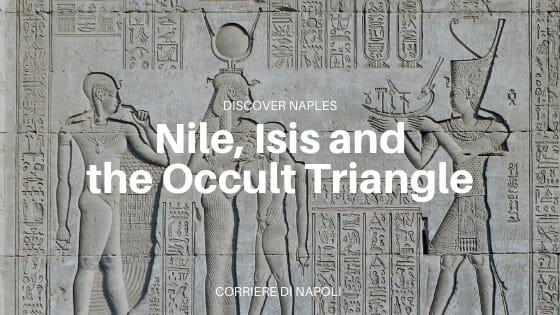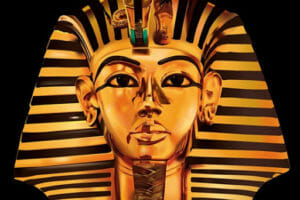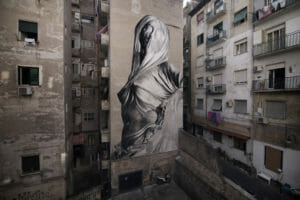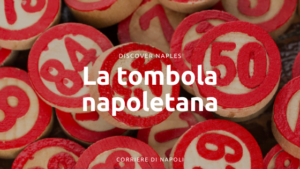
Like every Monday, Discover Naples is back: a column dedicated to the discovery of unknown and mysterious places and facts of the city. Today ‘s appointment will lead us to the discovery of a particular bond, that between Naples and the Egyptians. A particular blend of cultures and customs, which has been going on for centuries …
If you missed your last appointment, retrieve it here: The magician Chico and macaroni, the legend
Cultures in comparison

The story that unites Naples and the Egyptians begins in ancient Neapolis, more precisely the Egyptian colony of Nilense, located in today’s area between Via Tribunali and Via San Biagio dei Librai. The Regio Nilensis, so called at the time, was chosen not only for its resemblance to the Nile river delta, but also for the presence of a rivulet. During the first century BC Egyptian merchants arrived in Naples who decided to settle in the area bringing their own culture…
Consequently, Neapolitans and Egyptians began to share many customs of their life and culture, starting from the philosophical ones up to the funerary ones. It is impossible, speaking of Egypt, not to mention the afterlife and the relationship that the people had with the dead and, in particular, with mummification… Even Naples was no exception and shared the same interest in the afterlife: the Neapolitan mummification even developed over time. A first method was that of “draining the bodies“; the second, used in the 1500s, was embalming, widespread mostly among noble families.
But not only mummies…
 The divinities also played a fundamental role in the progressive rapprochement of the two cultures. As you can easily imagine, in addition to culture, the merchants from the mouth of the Nile also brought their own religion and iconography as well. Far from home, the inhabitants of the colony decided to create – as usual – a monument in honor of their land; so it was that in the second century BC the famous statue dedicated to the god Nile arose: an old half-naked lying on a rock, leaning against a Sphinx.
The divinities also played a fundamental role in the progressive rapprochement of the two cultures. As you can easily imagine, in addition to culture, the merchants from the mouth of the Nile also brought their own religion and iconography as well. Far from home, the inhabitants of the colony decided to create – as usual – a monument in honor of their land; so it was that in the second century BC the famous statue dedicated to the god Nile arose: an old half-naked lying on a rock, leaning against a Sphinx.
In addition to the god Nile there is the goddess Isis: lady of life and death, goddess of love, whose cult began to spread starting from commercial ports and in areas such as Pendino and Posillipo: sea areas where the goddess she was considered the protector of sailors. Isis immediately had a special bond with the Neapolitans: originally from the Delta, she was the Goddess of motherhood and fertility and, for this reason, considered by the Neapolitan people the “mother” par excellence.
There are many references to the same in Neapolitan iconography and the Virgin Mary depicted in churches – especially in the paintings of the Christianization period – often assumes the postures of the Goddess with the little Horus in her arms, born on December 25 and called the Sun God. For this reason the cult of Isis is thought to have initiated the veneration of the Immaculate Virgin. Even today, the cult lives on. It is indeed possible to visit two churches dedicated to Santa Maria Egiziaca (in Forcella and Pizzofalcone) or admire, in the Quartieri Spagnoli, the splendid mural dedicated by Bosoletti to the goddess.
The occult triangle

A mysterious triangle in the city, a place of power traceable by joining the points where the church of San Domenico Maggiore, the Sansevero Chapel and the statue of the Nile God statue. According to Egyptian popular culture, it was precisely in this magical area that man could reach and establish direct contact with the transcendent. Through some rites, in fact, it was possible to manifest extrasensory abilities that would have helped in contact with the otherworldly.
A theory that also strongly fascinated Neapolitan alchemists, including the Prince of Sansevero …







